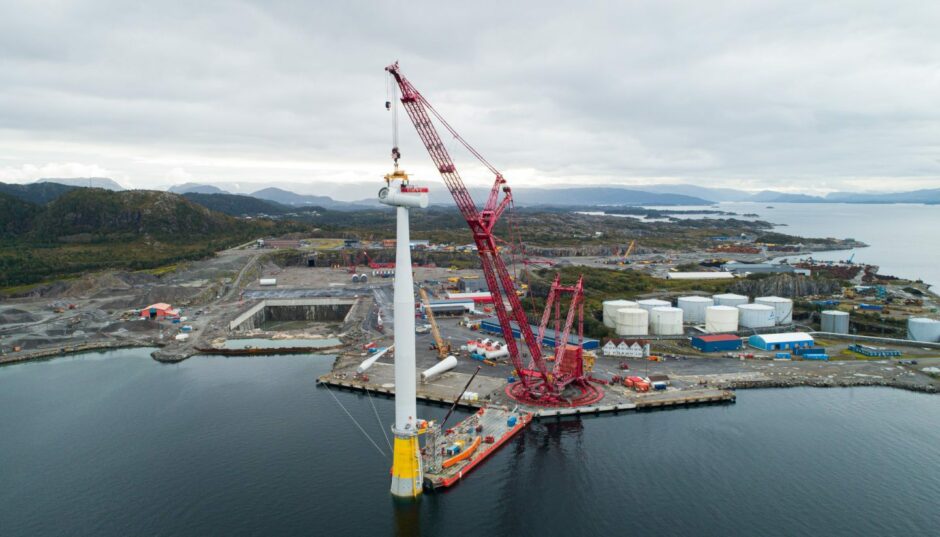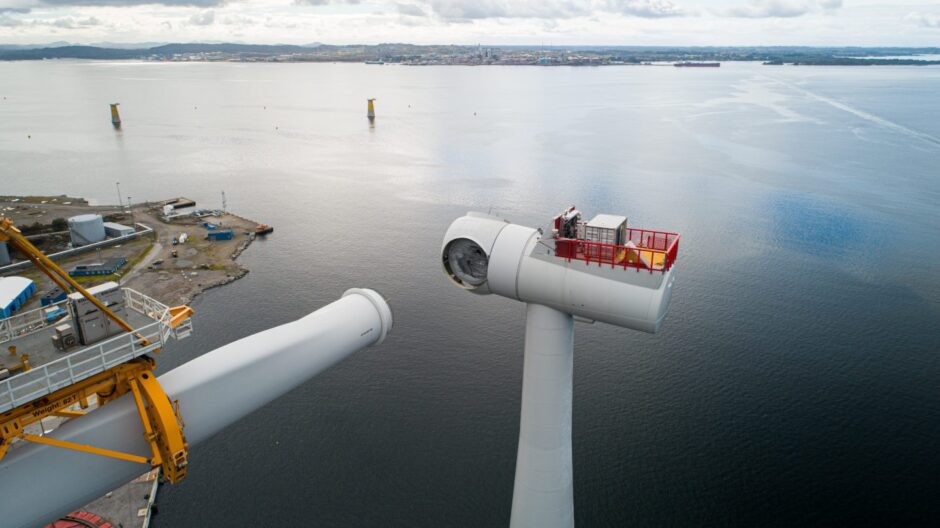
Global offshore wind capacity is expanding exponentially, with an expected rise from 34 GW of installed capacity in 2020 to a targeted 330 GW by 2030.
This is a welcome and much needed component in reaching net zero, but such a vertiginous rise also means that the supply chain critical to making these projects happen is facing challenges on a scale we have never seen before.
The upturn in project starts means that all players must consider the implications for their specialisms and how they can adapt. For example, out at sea a growing number of offshore wind projects means the already tight supply of jack-up and semi-submersible vessels will be thrown into even sharper focus.
Without necessarily having a vessel to rely on – or access only at higher prices due to demand – developers may have to turn to other assembly methods to keep projects on track and control costs.
This is not only a challenge at the installation stage. Global fabrication means more components travelling longer distances, equipment needed for longer at more yards to load-out and more vessels to perform the transportation.
When they reach a project, these components will then need to be transferred to a storage location and moved once again for load-out onto the installation vessel. This again puts greater demand on the availability of suitable equipment. Then there are local factors such as large tidal variations, or a lack of suitable existing facilities to take into account as well.
Of course, all this needs to be performed as efficiently as possible to avoid bottlenecks and hit installation windows, so any compromise in the crane, vessels, prime movers, or other equipment can impact the bottom line.
This is the kind of challenge engineers like us relish. Its appeal is increased further by another dimension: turbines are growing in size to maximise returns and reduce the cost of energy. Not only must equipment and methodologies be adapted to meet higher volumes, but they must also cater for the burgeoning scale and weight of components too.
This task can be considerable – blades of over 100m in length are becoming more common. Plus, if floating wind continues to grow in popularity, then moving foundations that weigh comfortably into the thousands of tonnes could become a regular procedure on the dock side.
Solutions to some of these challenges are being developed and, in some cases, can be found in the smarter use of existing equipment and methodologies.
For example, for the load-out of large jackets for the Seagreen offshore wind farm in Scotland – the world’s deepest fixed-bottom development – we needed to overcome extreme tidal ranges to avoid delays. We used one of our existing large ring cranes to lift the jackets quickly between land and sea rather than needing to wait for RORO windows.
At Hywind Tampen, in Norway, entire 8.6 MW turbines – including tower sections, nacelles, and blades – needed to be assembled onto huge 107m spar buoys in port. We were able to deliver a cost-effective assembly option, building floating wind turbines for Hywind Tampen directly from the land at a remarkable distance of 143m. This meant the project could be de-risked against the effects of harsh offshore conditions.
Elsewhere we have supported the Greater Changhua and Zhonneng projects in Taiwan to build at a large scale, by using a ring crane to integrate foundation segments quickly. We are working with a local partner sharing decades of knowledge – as we did in oil and gas – to leave a lasting legacy of success in wind.
But reworking or reconfiguring what we have will only take us so far. If we are serious about achieving 330 GW capacity by 2030 then the industry as a whole needs to apply its considerable capabilities to creating new solutions fit for the era-defining challenges we face.
We are seeking to play our part by committing to the development of a new class of ring crane that will be able to lift 6,000t. This will not only open the possibilities for producing larger and larger components, the ability of these cranes to lift weights at a longer outreach will also allow for more efficiencies in how smaller components are moved around the dockside.
However, this is only a small part of the bigger picture – we need many more innovations to keep things on track. This will need participation from the wider supply chain.
This must be achieved, of course, against the backdrop of challenging financial conditions for major OEMs and we must be conscious of balancing the funding of research and development with the need to keep energy costs affordable.
There is an equilibrium to be found here, where we can incentivise investment and deliver safe projects whilst offering the most efficient ways of generating more renewable power. With government and industry working together I am confident this is something we can achieve – but we must all act quickly.
Recommended for you

 © Supplied by Mammoet
© Supplied by Mammoet